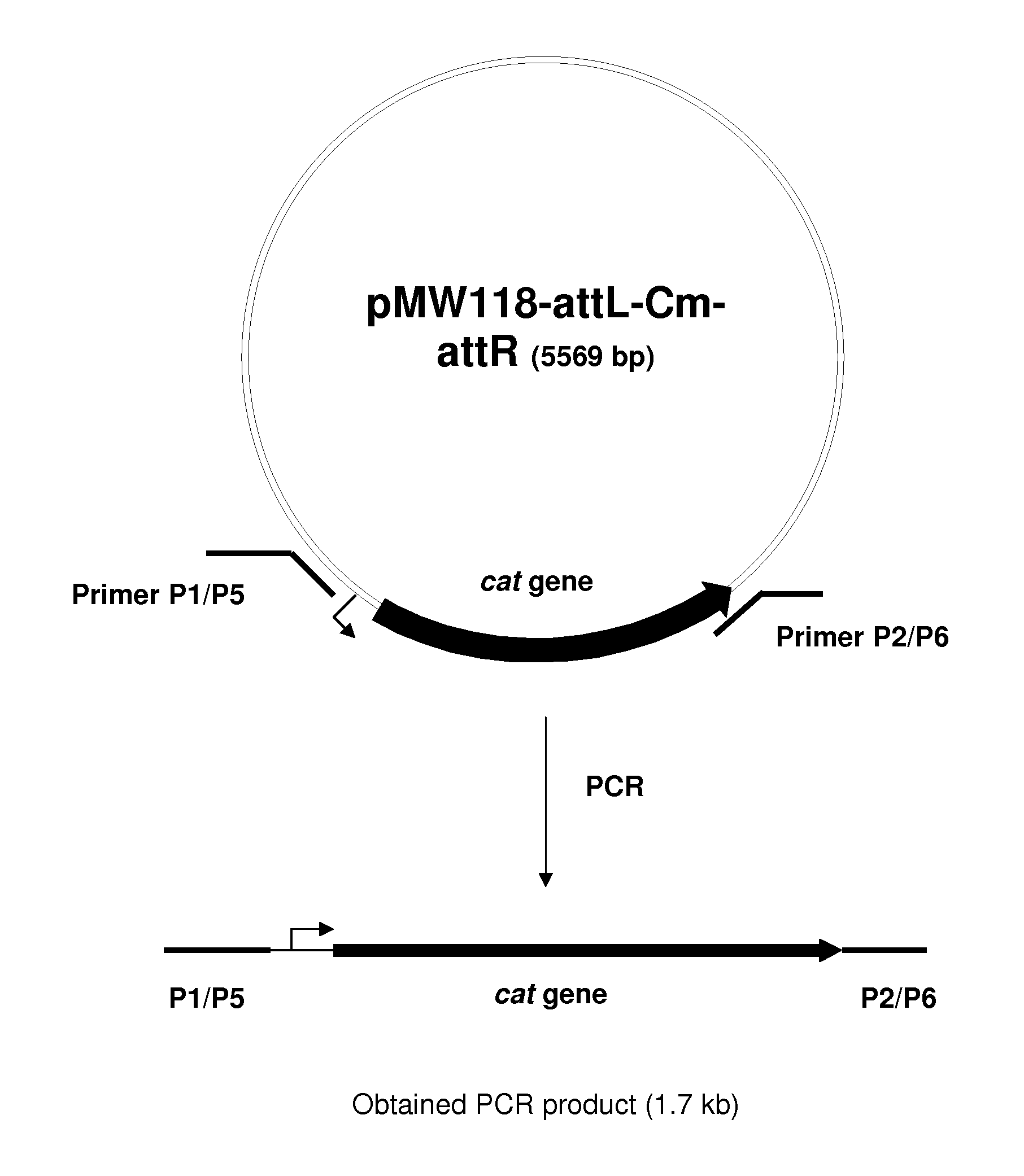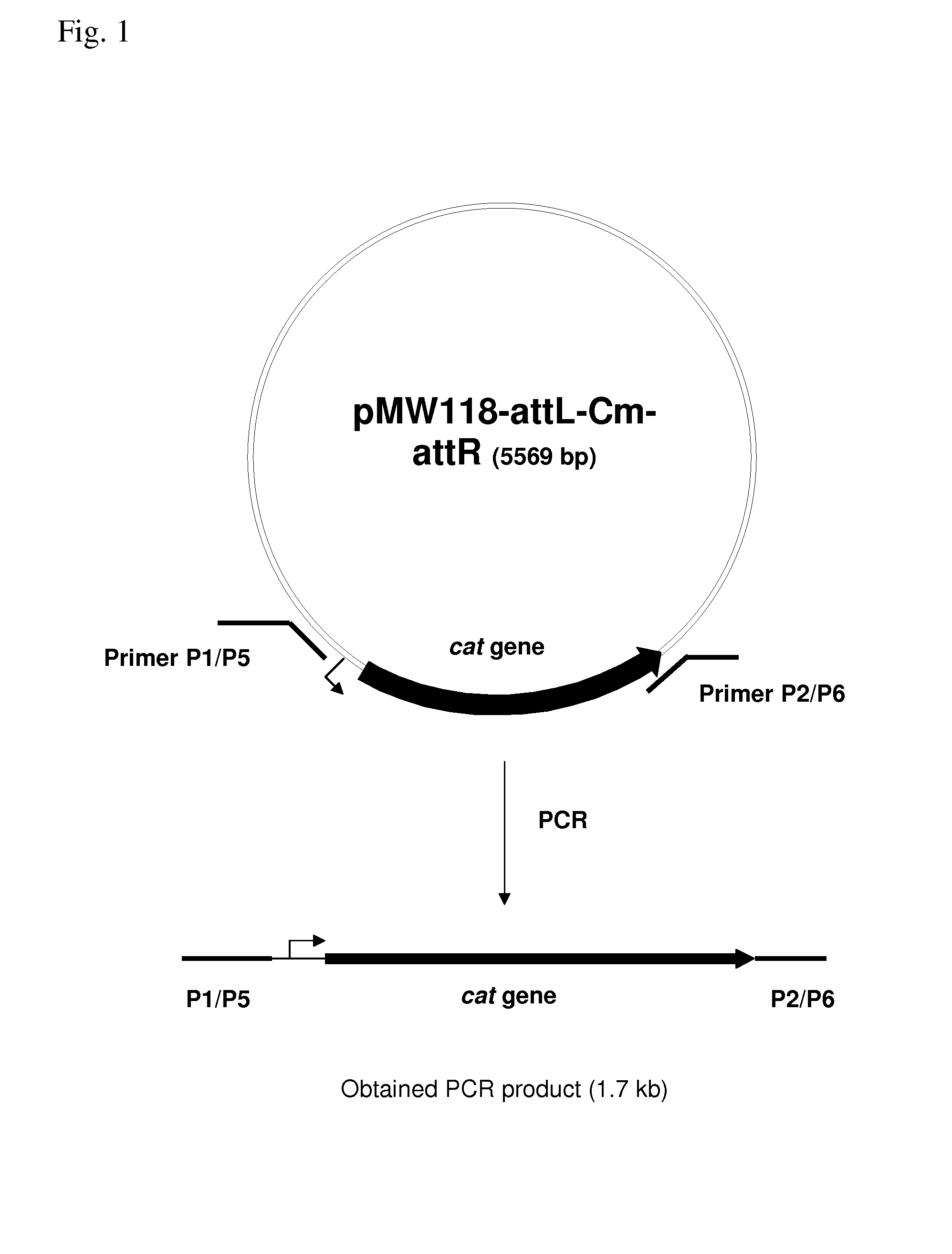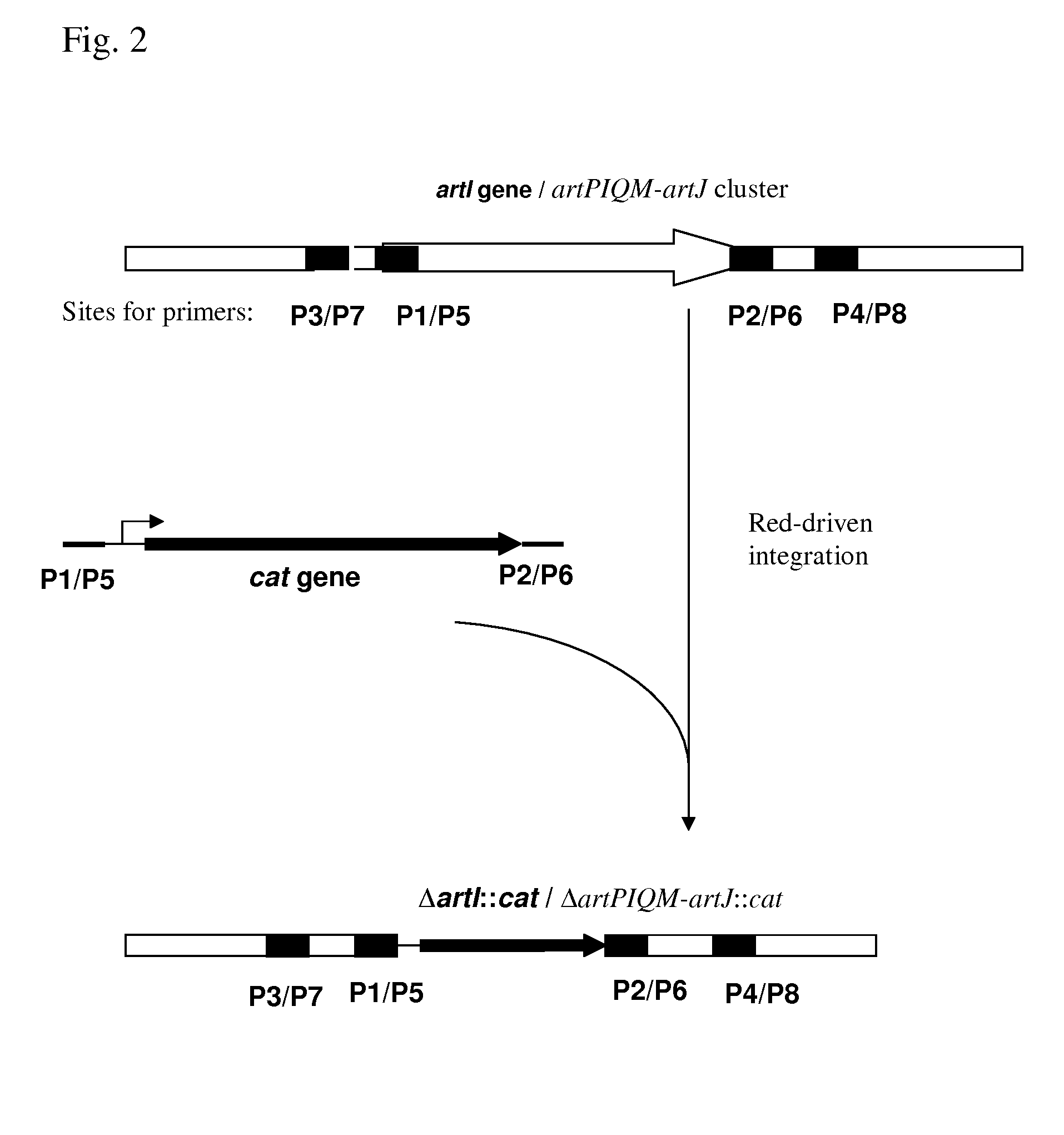Method for producing l-arginine using a bacterium of enterobacteriaceae family, having attenuated expression of a gene encoding an l-arginine transporter
a technology of l-arginine and enterobacteriaceae, which is applied in the field of microorganisms, can solve the problems of no reports of attenuation of expression, and achieve the effect of enhancing the productivity of l-arginine producing strains
- Summary
- Abstract
- Description
- Claims
- Application Information
AI Technical Summary
Benefits of technology
Problems solved by technology
Method used
Image
Examples
example 1
Construction of a Strain with an Inactivated artI Gene
1. Deletion of the artI Gene
[0061]The artI gene in a bacterial strain was deleted by the method initially developed by Datsenko, K. A. and Wanner, B. L. (Proc. Natl. Acad. Sci. USA, 2000, 97(12), 6640-6645) called “Red-driven integration”. According to this procedure, the PCR primers P1 (SEQ ID NO: 11) and P2 (SEQ ID NO: 12), which are homologous to both the region adjacent to the artI gene and the gene which confers antibiotic resistance in the template plasmid, were constructed. The plasmid pMW118-attL-Cm-attR (WO 05 / 010175) was used as the template in the PCR reaction. Conditions for PCR were as follows: initial DNA denaturation for 5 min at 95° C., followed by 25 cycles of denaturation at 95° C. for 30 sec, annealing at 54° C. for 30 sec, elongation at 72° C. for 40 sec; and the final elongation for 5 min at +72° C.
[0062]The 1.7 kb PCR product (FIG. 1) was purified from an agarose gel and used for electroporation of the E. co...
example 2
Construction of a Strain with an Inactivated artPIQM-artJ Cluster
1. Deletion of the artPIQM-artJ Cluster
[0065]The artPIQM-artJ cluster in a bacterial strain was deleted by Red-driven integration. According to this procedure, the PCR primers P5 (SEQ ID NO: 15) and P6 (SEQ ID NO: 16), which are homologous to both the region adjacent to the artPIQM-artJ cluster and the gene which confers antibiotic resistance in the template plasmid, were constructed. The plasmid pMW118-attL-Cm-attR (WO 05 / 010175) was used as the template in the PCR reaction. Conditions for PCR were as described above.
[0066]The 1.7 kb PCR product (FIG. 1) was purified from an agarose gel and used for electroporation of the E. coli strain MG1655 (ATCC 700926), which contains the plasmid pKD46
[0067]Electrocompetent cells were prepared as described above. Electroporation was performed using 70 μl of cells and ≈100 ng of the PCR product. Cells after electroporation were incubated with 1 ml of SOC medium at 37° C. for 2.5 h...
example 3
Production of L-arginine by E. coli 382ΔartI and E. coli 382ΔartPIMQ-artJ.
[0069]To test the effect of inactivation of the artI gene or artPIMQ-artJ cluster on L-arginine production, DNA fragments from the chromosome of the above-described E. coli MG1655ΔartI and E. coli MG1655ΔartPIMQ-artJ were transferred to the L-arginine producing E. coli strain 382 by P1 transduction (Miller, J. H. (1972) Experiments in Molecular Genetics, Cold Spring Harbor Lab. Press, Plainview, N.Y.) to obtain E. coli 382ΔartI and 382ΔartPIMQ-artJ strains, respectively. The strain 382 has been deposited in the Russian National Collection of Industrial Microorganisms (VKPM) (Russia, 117545 Moscow, 1 Dorozhny proezd, 1) on Apr. 10, 2000 under accession number VKPM B-7926 and then converted to a deposit under the Budapest Treaty on May 18, 2001.
[0070]The E. coli strains, 382, 382ΔartI and 382ΔartPIMQ-artJ, were separately cultivated with shaking at 37° C. for 18 hours in 3 ml of nutrient broth, and 0.3 ml of the...
PUM
| Property | Measurement | Unit |
|---|---|---|
| temperature | aaaaa | aaaaa |
| temperature | aaaaa | aaaaa |
| temperature | aaaaa | aaaaa |
Abstract
Description
Claims
Application Information
 Login to View More
Login to View More - R&D
- Intellectual Property
- Life Sciences
- Materials
- Tech Scout
- Unparalleled Data Quality
- Higher Quality Content
- 60% Fewer Hallucinations
Browse by: Latest US Patents, China's latest patents, Technical Efficacy Thesaurus, Application Domain, Technology Topic, Popular Technical Reports.
© 2025 PatSnap. All rights reserved.Legal|Privacy policy|Modern Slavery Act Transparency Statement|Sitemap|About US| Contact US: help@patsnap.com



